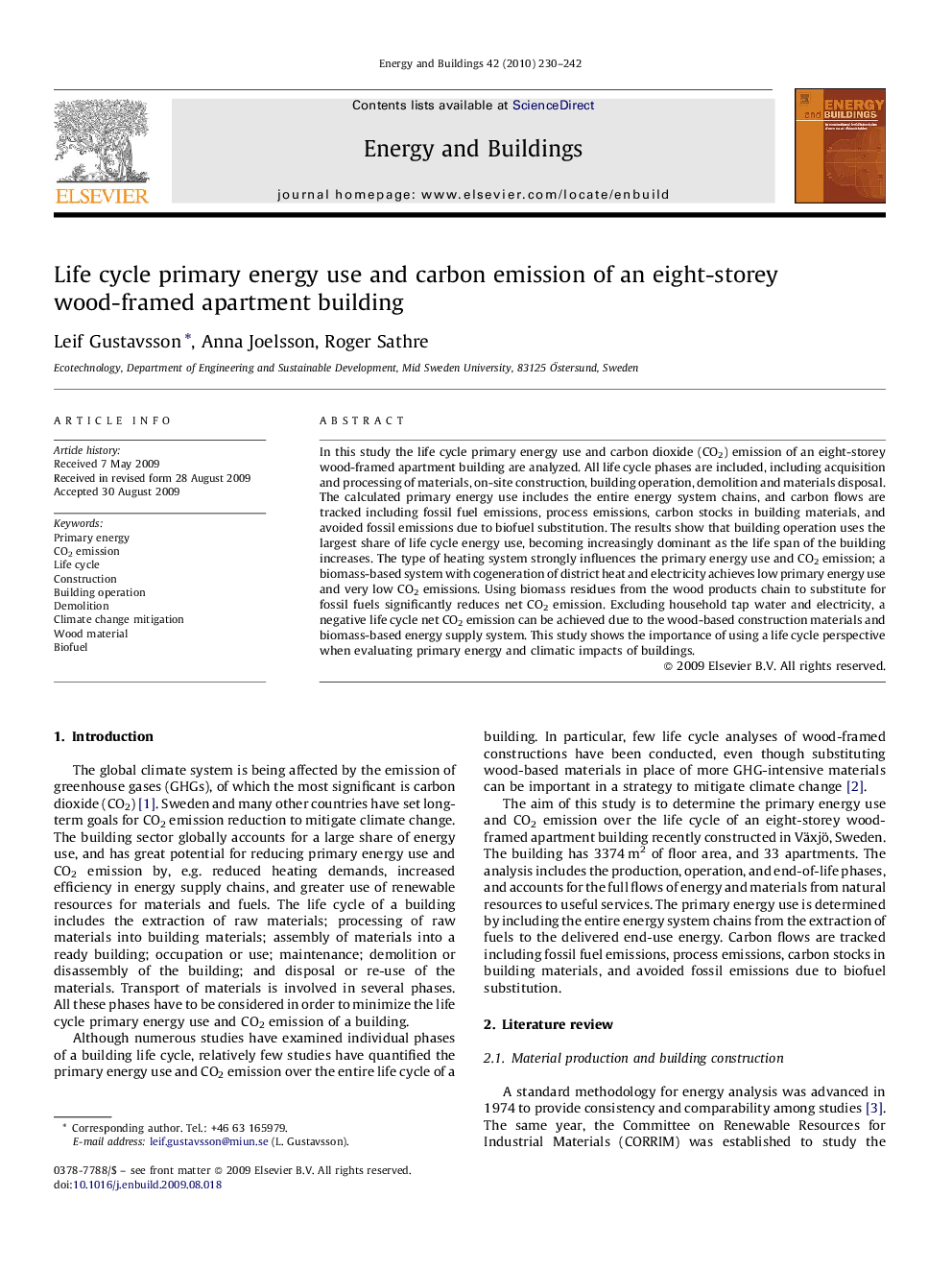| Article ID | Journal | Published Year | Pages | File Type |
|---|---|---|---|---|
| 265173 | Energy and Buildings | 2010 | 13 Pages |
In this study the life cycle primary energy use and carbon dioxide (CO2) emission of an eight-storey wood-framed apartment building are analyzed. All life cycle phases are included, including acquisition and processing of materials, on-site construction, building operation, demolition and materials disposal. The calculated primary energy use includes the entire energy system chains, and carbon flows are tracked including fossil fuel emissions, process emissions, carbon stocks in building materials, and avoided fossil emissions due to biofuel substitution. The results show that building operation uses the largest share of life cycle energy use, becoming increasingly dominant as the life span of the building increases. The type of heating system strongly influences the primary energy use and CO2 emission; a biomass-based system with cogeneration of district heat and electricity achieves low primary energy use and very low CO2 emissions. Using biomass residues from the wood products chain to substitute for fossil fuels significantly reduces net CO2 emission. Excluding household tap water and electricity, a negative life cycle net CO2 emission can be achieved due to the wood-based construction materials and biomass-based energy supply system. This study shows the importance of using a life cycle perspective when evaluating primary energy and climatic impacts of buildings.
